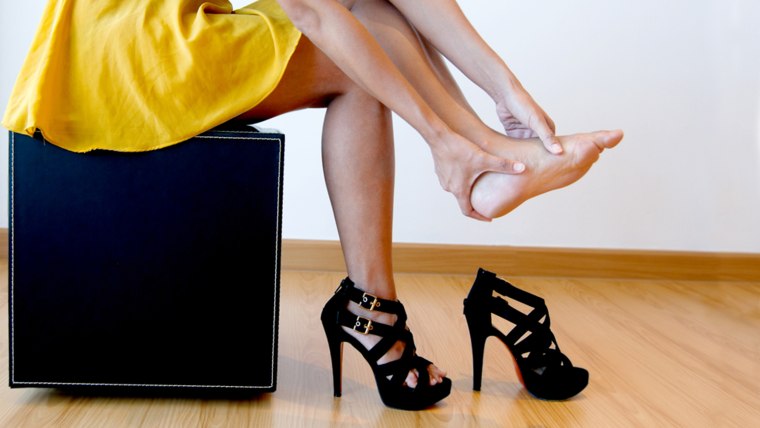By the time you’re 50, you will have logged an estimated 75,000 miles on your feet, according to the American Podiatric Medical Association (APMA). So even if you’re a decade or two shy of the big 5-0, chances are your feet have seen more than their fair share of abuse — especially if you wear high heels on a regular basis.
“Just like you can’t eat cake every day and expect to stay healthy, you can’t wear uncomfortable shoes every day and expect your feet to feel good,” says Jacqueline Sutera, a doctor of podiatric medicine and surgery in New York City.
High heel wearers experience more shoe-related injuries — to their feet, ankles, knees, hips, and even heads and necks — than those who stick to more down-to-earth footwear.
A recent study by researchers at the University of Alabama at Birmingham found that the incidence of high heel-related injuries doubled between 2002 and 2012. The researchers analyzed emergency room records during that time period to determine what age groups, and which body parts, sustained the most injuries. Those in their twenties and thirties were most likely to end up in the ER while teetering around in heels, and the most common injuries were strains and sprains of the ankle or foot.
“The most surprising finding was that nearly half of the injuries occurred at home,” says Gerald McGwin, Ph.D., vice chair and professor of the department of epidemiology, at the UAB School of Public Health. “My expectation is that in the home environment high heels would be discarded for something more comfortable, so, either this assumption is incorrect or, when worn in the home, the environment is conducive to injury. I suspect the latter is more likely the case.”

Things most likely to trip you up around the house? Slippery wooden floors and stairs.
A recent report published in the International Journal of Clinical Practice, may help explain those injury rates. Researchers looked at a group of women who wore shoes with heels about 4 inches more than three times a week, measuring their ankle strength over a three-year period.
What they found would make even Carrie Bradshaw ditch her pin heels for flats.
“While wearing high-heeled shoes appeared to strengthen ankle muscles at first, prolonged use eventually caused an imbalance, which is a crucial predictor of ankle injury,” wrote Dr. Yong-Seok Jee, a professor at Hanseo University, South Korea, and co-author of the study.
Other than swapping all your Manolos and Jimmy Choos for Nikes, what can you do to stay safe on your feet?
Scale back the height
Statistically, your risk for injury increases along with the number of inches in your heel. According to the APMA, anything over 2 inches can cause trouble.
Thinner isn’t better
Picking out heels is one situation in which chunkier is actually preferable. “The thinner the heel, the less stable it is,” says Emily Splichal, a New York City podiatrist and creator of a high heel workout called Catwalk Confidence. “A chunkier heel provides more surface area and greater stability.”
Skip the platforms
You might think choosing a shoe with a platform under the toe as well as a heel is a safe bet, but according to Splichal, that platform just disconnects you even more from contact with the ground—meaning your feet get less sensory information and are less able to maintain stability while walking.
Rethink your stance
“The higher your heel, the more of your body weight gets shifted onto the ball of the foot,” explains Sutera. Fight that natural tendency by consciously seeking out a more centered balance point. “Don’t be afraid to use the heel to hold some of your weight,” says Splichal. “Try to feel your body more evenly distributed throughout the shoe.”
Strengthen your core
“The way you stabilize your feet is by improving the strength of your glutes, hips and core,” says Splichal. She suggests one-legged moves, like squats and lunges, that improve balance and help stabilize all those key muscles.
Give your feet a break
“I have a drawer full of high heeled shoes at work, but I don’t commute in them or wear them to walk around town,” says Sutera. “It’s a small sacrifice that results in a huge reduction in wear and tear on your body.”
Do a daily reset
After a day in heels, spend five minutes or so stretching your hip flexors, quads and calves.